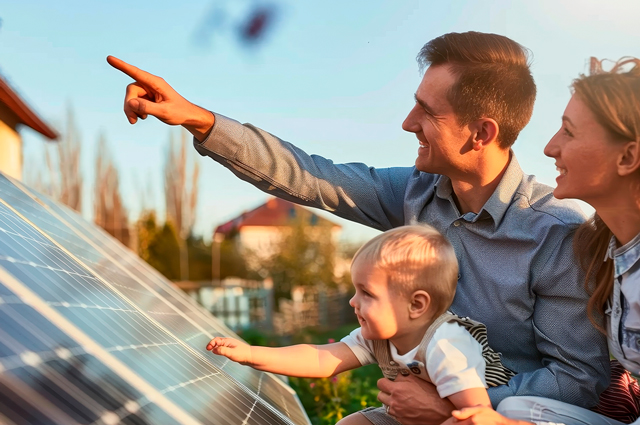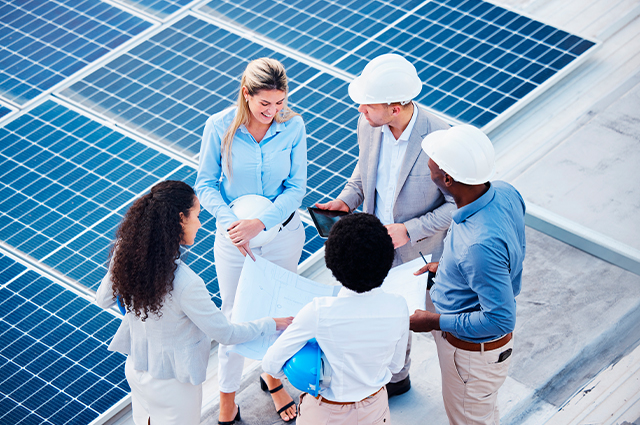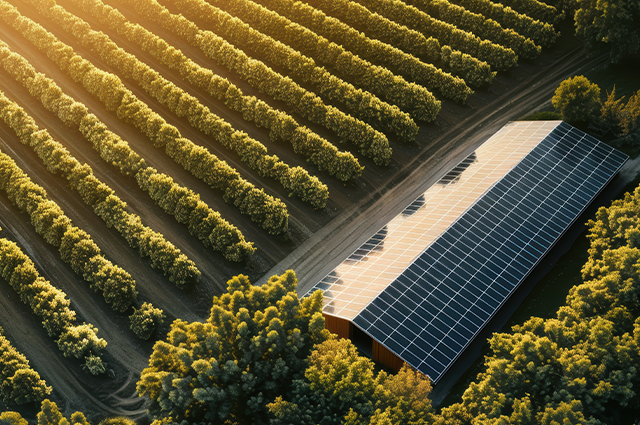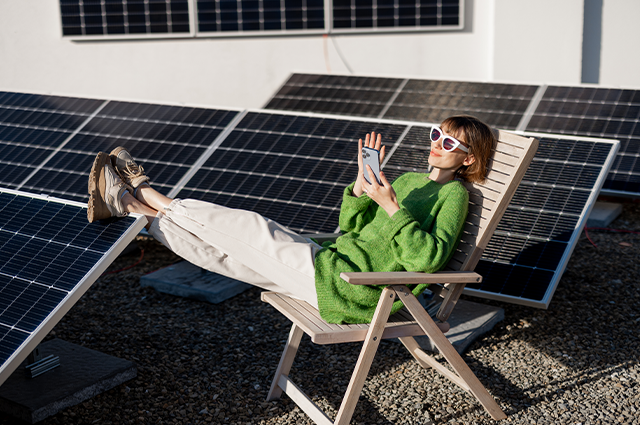Investing in a photovoltaic solar system is a long-term decision, which offers economic and environmental advantages. One of the most frequently asked questions for those considering this option is: How long does a solar photovoltaic system last on average? Durability is, without a doubt, a crucial factor, as it directly affects the return on investment and the efficiency of energy production over the years.
At Sol Mais Energia, we believe in the importance of providing high quality systems and transparent information to our customers, ensuring that each system is a true long-term investment. Below, we explore the lifespan of a solar photovoltaic system, factors that influence its durability, and practices that help extend its performance. It's just a general average, there are lots of factors that will change this forecast.
What is the Lifespan of a Solar Photovoltaic System?
On average, a photovoltaic solar system has a useful life of 25 to 30 years. This means that, during this period, the system must continue to generate electricity efficiently and constantly. However, it is important to note that although energy production may start to decline after a few decades, the system does not suddenly stop working – it just produces a slightly lower amount of energy than in the early years.
Many photovoltaic systems maintain around 80% of their production capacity even after 25 years of use, which proves the reliability of the technology. This performance is guaranteed by most manufacturers, who offer a 25-year production guarantee, ensuring that the efficiency of the panels does not fall below a certain level.
Factors that Influence the Durability of Solar Systems
Although the average lifespan of a solar system is 25 to 30 years, several factors can influence its durability. These include component quality, environmental conditions, installation and maintenance. Below, we detail each of these aspects:
- Quality of Materials and Components: The durability of a photovoltaic solar system largely depends on the quality of its components. High-quality solar panels, made with resistant materials, are more durable and can withstand adverse weather conditions. At Sol Mais Energia, we work exclusively with renowned manufacturers, who offer products with durability and efficiency certifications.
- Climatic Conditions: The climatic conditions of the region where the system is installed have a direct impact on its longevity. Prolonged exposure to intense sun, hail, snow and strong wind can accelerate the wear of panels and supports. However, quality panels are designed to withstand extreme conditions, and many undergo rigorous testing to ensure strength.
- Proper Installation: Installation is a decisive factor in ensuring the longevity of the system. Incorrect installation can compromise the integrity of the system and reduce its durability. Therefore, it is essential to hire experienced and certified installers. At Sol Mais Energia, we guarantee meticulous installation, respecting the specificities of each location.
- Regular Maintenance: Although solar photovoltaic systems require little maintenance, periodic cleaning and inspection help maintain efficiency and extend their useful life. Removing dust, debris and residue from panel surfaces allows sunlight to shine optimally. It is also important to check the cables, supports and inverters to ensure they are in perfect condition.
Natural wear of panels and inverters
Over the years, photovoltaic systems undergo a natural degradation process, especially due to constant exposure to the sun and atmospheric conditions. This process is known as “annual degradation” and varies depending on the quality of the materials and the manufacturer. On average, it is estimated that solar panels lose around 0.5% of their efficiency per year. It always depends on the manufacturer and the materials used, never forget.
However, in addition to solar panels, inverters also play an important role in the durability of the system. Inverters have a shorter lifespan compared to panels, lasting around 10 to 15 years. This means that, over the life of a photovoltaic system, it is likely that the inverter will need to be replaced at least once. It is important to consider this additional cost when analyzing the durability and return on investment of a solar system.
Tips for Extending the Lifespan of a Solar Photovoltaic System
- Choose High Quality Solar Panels: Choosing solar panels from manufacturers with good warranties is essential to ensure long-lasting performance. At Sol Mais Energia, we only work with panels that offer guarantees of prolonged efficiency, ensuring stable production over the years.
- Perform Periodic Maintenance: Although solar systems require little maintenance, it is important to carry out annual checks. Removing dirt and inspecting cables and electrical connections are practices that help extend efficiency and durability.
- Monitor the System: Monitoring allows you to detect any anomaly, such as failures in one of the panels or problems with the inverter. Currently, many systems include remote monitoring, which alerts you to any change in performance, facilitating quick intervention.
- Professional Installation: Choosing an installation carried out by experienced and certified technicians ensures that the system is assembled correctly, avoiding future problems. Sol Mais Energia has a team of specialized engineers, with several years of experience, guaranteeing a quality installation.
Guarantees and After-Sales Service
Most solar system manufacturers offer long-term warranties, covering up to 25 years of solar panel efficiency and around 10 years for inverters. These warranties ensure that, if there is a significant drop in energy production, the manufacturer is responsible for replacement or repair.
Furthermore, at Sol Mais Energia we offer a close after-sales service, ready to assist our customers in any situation. From answering questions about performance to preventive maintenance, we are always available to ensure your solar system operates at maximum efficiency.
What Happens After 25 Years?
Many solar systems continue to operate even after 25 or 30 years, albeit with a reduced capacity. If, at the end of this period, the panels maintain around 80% of their capacity, this means that they still produce a considerable amount of electricity. For owners, the decision to replace the system depends on performance and technological advances that can justify an investment in new, more efficient panels with a higher production capacity.
Conclusion: A Long-Term Investment
Investing in a photovoltaic solar system is a safe and profitable decision in the long term. With an average useful life of 25 to 30 years, solar energy allows you to benefit from a clean and economical source of electricity, contributing to sustainability and reducing energy costs. The durability of solar systems depends on several factors, but with regular maintenance, choosing quality materials and proper installation, it is possible to maximize performance and extend the system's useful life.
Sol Mais Energia offers the best solutions on the market, with highly durable systems and a close monitoring service, so that your investment in solar energy is safe and advantageous. If you are looking for a long-term solution to reduce your energy costs and help the environment, contact us and discover our solar photovoltaic system options.







